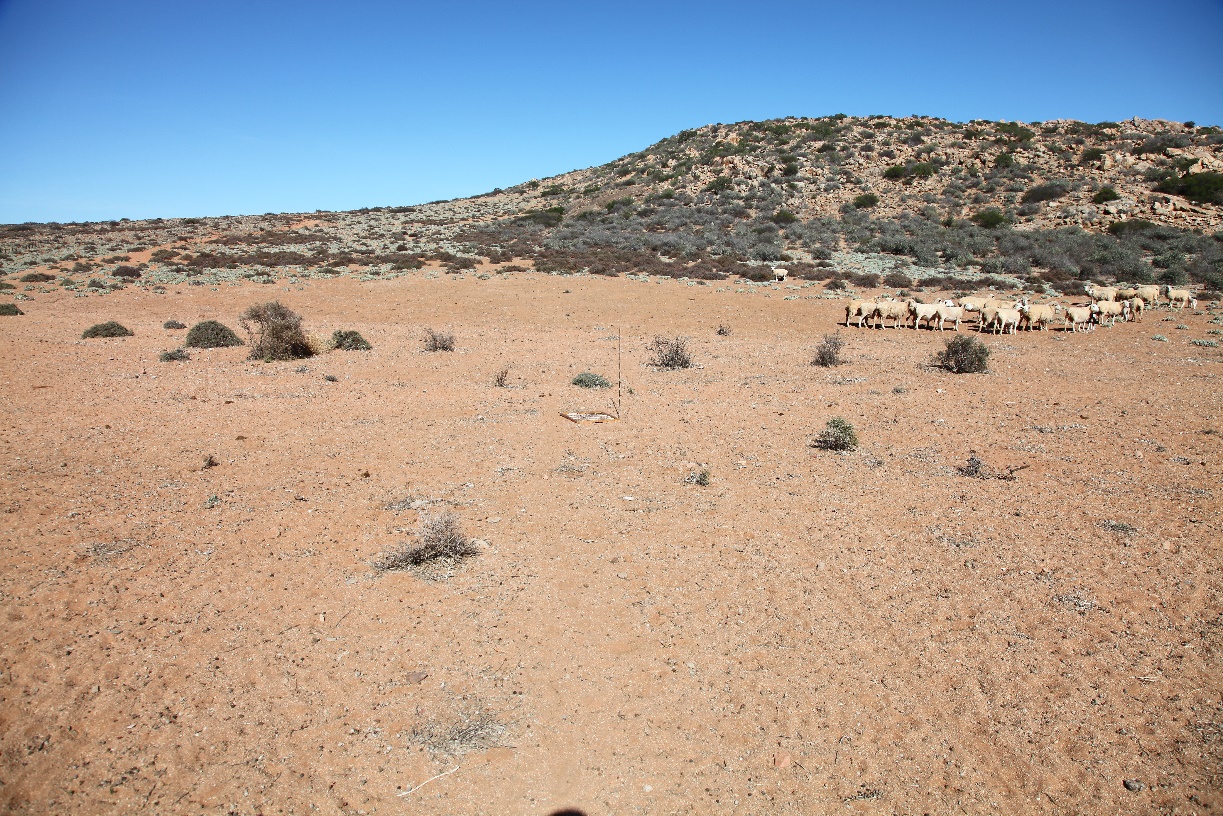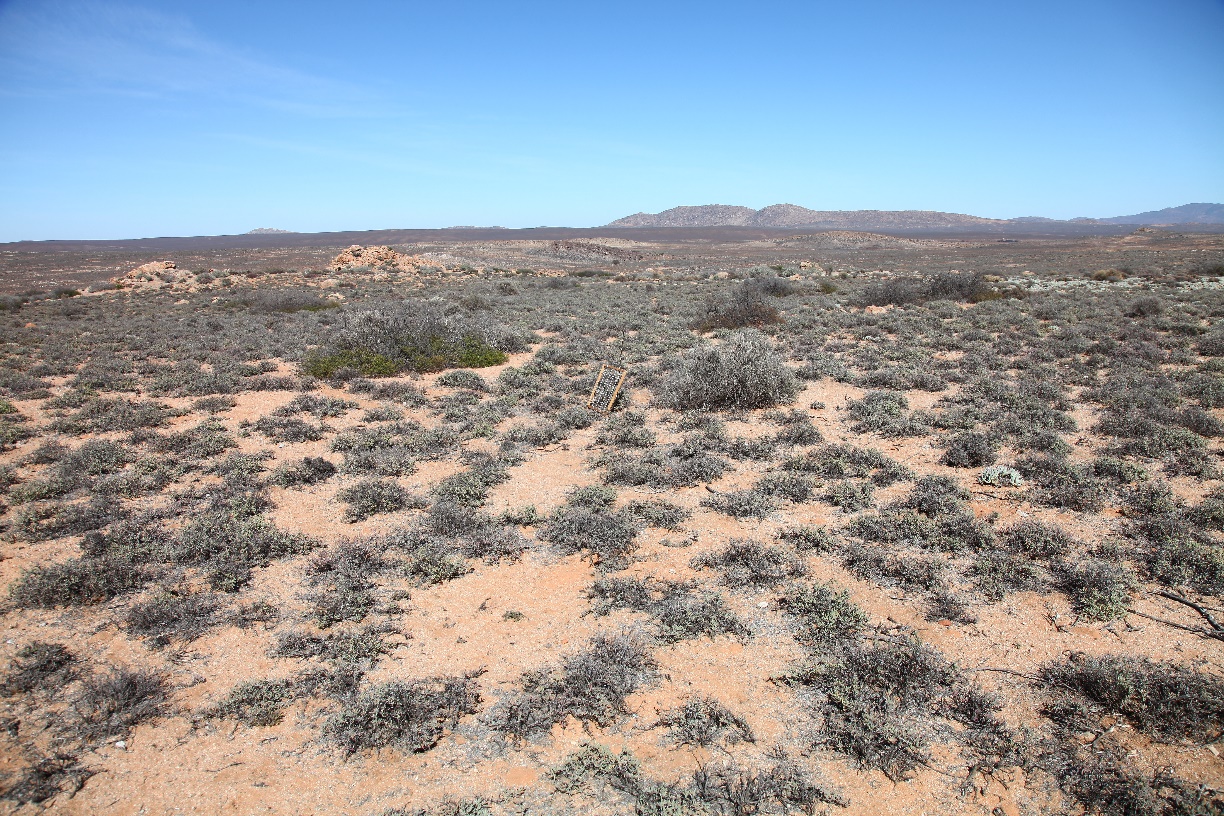Land degradation and drought in a semi-arid environment

Plant Conservation Unit PhD student, Wesley Bell, returned to Namaqualand during September and October 2017 to collect data for his research into land degradation (see article on previous trip here). In an attempt to sample the full range of conditions of five of the major vegetation types of Namaqualand, Wesley drove over 5 000 kilometres while sampling 317 sites.
Although Wesley managed to collect a good amount of data while visiting some extraordinary landscapes, the overriding influence of the drought was always at the forefront of his mind. Along with much of South Africa, Namaqualand has experienced a severe reduction in rainfall over the last five or so years and this year seems to be the worst yet. The flower season, which usually begins between the months of August and October, is yet to arrive. The flowers that drape the landscape in a kaleidoscope of colours are not only important for the burgeoning tourism industry but are also vital for livestock farmers in the region.
One of these farmers is Mr. George Coetzee, the owner of ‘Gannabos Farm’, which falls within the Namaqualand Blomveld vegetation type of the project sampling area. Wesley was fortunate enough to spend a few hours with Mr. Coetzee and his family, who have farmed in the region for generations. Mr. Coetzee explained how this was the first time in the 20 years that he had owned Gannabos farm that the rainfall to that point had been insufficient to trigger any flowering whatsoever. He explained that although rainfall amounts had been unusually low over the last five years, there had always been a sufficient amount to allow the plants on his farm to flower extensively. At the time of Wesley’s visit, however, the farm was so dry that some areas gave the impression of having been recently burnt. The lack of rain has resulted in Mr. Coetzee, and his neighbours, having to adapt and diversify their farming practices. Most farmers need to supplement their sheep’s diets with lucerne or other feed, and have had to reduce their herd numbers in an attempt to prevent overgrazing. This has resulted in higher costs and lower revenue, and so some farmers have entered the trade game by buying livestock from smaller communal farmers and selling it on to big distributors based in larger towns like Upington. Despite these efforts, however, the consensus among the farmers in this area, as Mr. Coetzee explained, was that they would be able to farm until December this year and, if there are no decent rains by then, they do not know how they will carry on.
If this is the experience of private farmers who own relatively large farms, and usually a second farm in the summer rainfall Bushmanland area, then it is difficult to imagine the plight of communal farmers with less access to land and resources and limited ability to adapt their livelihood strategies. Whether you are a private or communal farmer, however, the current drought is one that threatens your very livelihood, and ability to survive in an already marginal and demanding environment. On a more theoretical level, the drought is highlighting both the impact that climate has on arid and semi-arid regions, as well as the interplay between land use and climate in determining and controlling vegetation cover and distribution. This provides a tangible example of the desperate need to understand dryland environments in order to not only conserve biodiversity but to also promote the sustainable livelihoods of local dryland inhabitants.

Sheep approach the Plant Conservation Unit bakkie with the expectation of being fed.

A 'Blomveld' landscape devoid of colour for the first time in living memory.
~ Article and images supplied by Wesley Bell
